The 2024 Porsche Panamera's Active Suspension Can Eliminate Body Roll
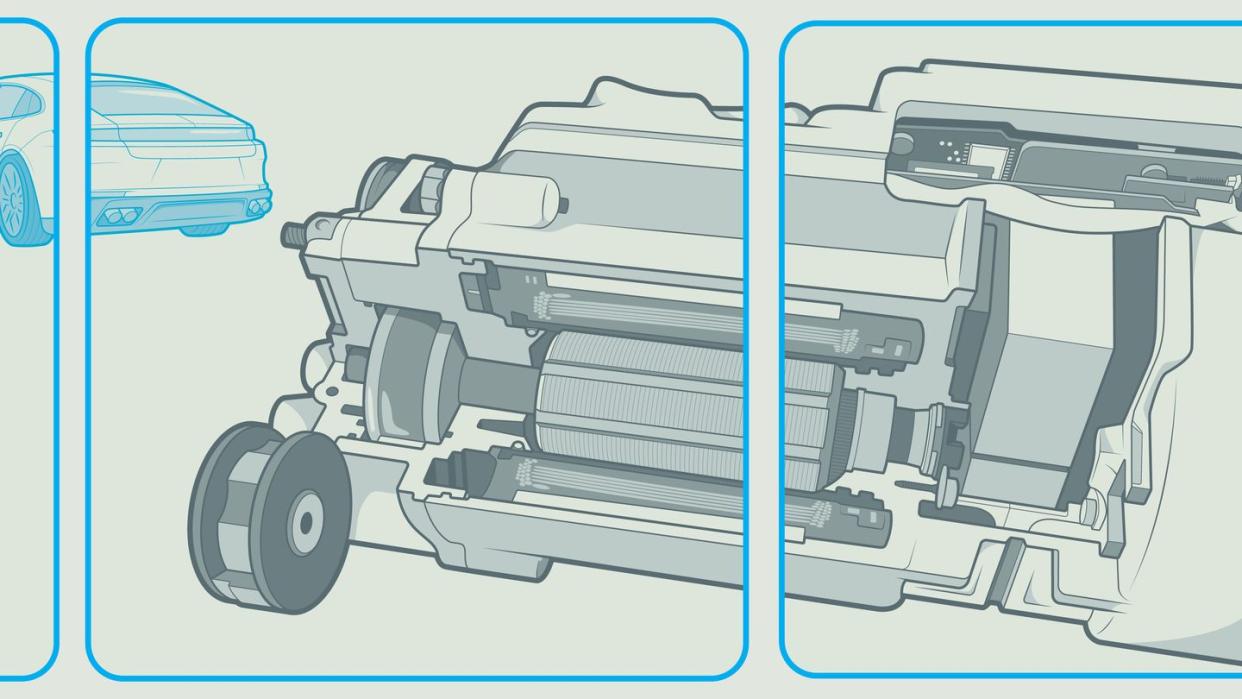
“Don’t flip the phone over,” the engineer warns. “We haven’t tested that.” And so, I’m handed an iPhone with a simple app that, via the phone's gyroscopic sensors, bounced a third-generation Porsche Panamera prototype up and down almost like an L.A. lowrider. It’s one hell of a trick.
Porsche engineers created this demonstration for a media event to show the power of Porsche Active Ride, a new fully active suspension system that makes its debut on the new Panamera today. It’s the ultimate in suspension technology. “It's quite like a dream,” says Jochen Liebold, manager of vertical dynamics systems at Porsche, “because I started 20 years ago doing a master degree, and I was theoretically designing active suspension at BMW before I came to Porsche. Now 20 years later, I have it alive.”
No, your Panamera won't be able to do that. This is just a prototype made for fun and demonstration.
With a hydraulic motor-pump unit connected to each damper, Porsche Active Ride puts force into the car's suspension. The system can lift up or push down on each wheel independently, and it's used to dramatically increase ride comfort while also eliminating perceptible body roll.
“The system was born from the idea of eliminating all restrictions in the chassis system,” adds Active Ride’s chief engineer, Dr. Christopher Bittner. “What do we have to do to eliminate everything that’s disturbing us today, and this is the result.”
Porsche engineers started working on the system as a theoretical concept around four years ago. The original plan was to have Active Ride in production for an all-electric model coming a few years from now, but when the Porsche board experienced the system, it got fast-tracked into the new Panamera.
The hardware is seemingly simple. Porsche Active Ride uses an electric motor and a hydraulic pump at each corner that pumps fluid in and out of the damper. This allows for fully variable damping force and replaces the traditional anti-roll bar, allowing each wheel to move independently of one another. Two motor-pump units are housed within an aluminum casing mounted where the anti-roll bar would otherwise go. (The third-generation Panamera has the same basic chassis as the previous-generation model, which was never designed with this technology in mind. So, the same mounting points had to be used.) Attached to each motor-pump unit are two rubber tubes connected to the dampers. The dampers are of Porsche’s new two-valve design, which allows for independent control over compression and rebound characteristics. Each motor-pump unit is capable of adding 2248 pounds of supplemental force at each corner of the car and the whole system runs at a frequency of 15 hz.
Porsche uses single-chamber air springs with the Active Ride system, but their only job is to support the weight of the car. Their spring rate is set very low to maximize ride comfort. Active Ride manages ride height using the dampers.
“We knew the innovation must be in the chassis system,” says Dr. Thomas Freimuth, head of the Panamera model line, “because this is so important for a Porsche, to make it a drivable sports car.” The idea with Porsche Active Ride is to bring about a dramatic increase in comfort without any sacrifice to handling.
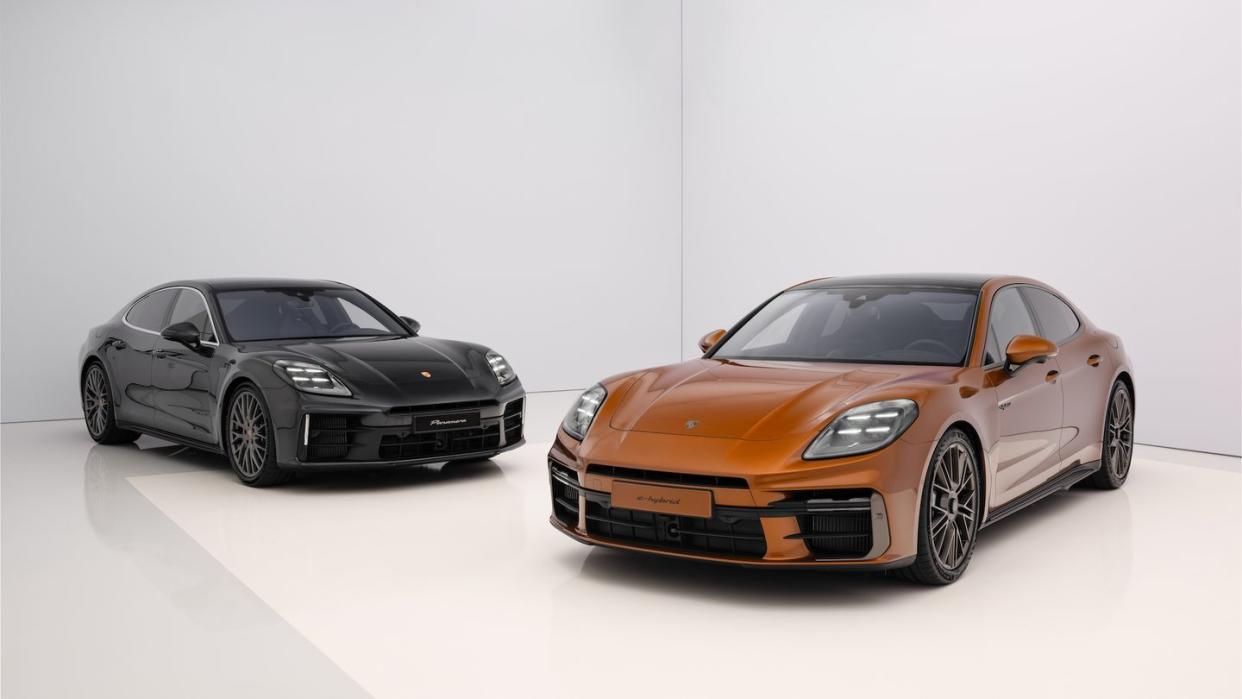
With an active suspension system, engineers can totally decouple ride and handling, and thus, the compromises between the two. It’s technology that’s been worked on for decades, though by our reckoning, Porsche Active Ride is only the second system that’s made it to production. The first, by a few months, is a system developed by Ferrari for the Purosangue SUV which uses hardware from Multimatic. Bose, the audio company, had its own active suspension system in development for years, but it was too heavy to be practical. Lotus also developed an active suspension system in the Eighties for the C4 Corvette ZR-1, but it too never made production. Active suspension also featured prominently in Formula 1 in the early Nineties before being banned over cost.
The goals of Porsche's and Ferrari's systems are broadly similar, but the hardware is quite different. Multimatic’s True Active Spool Valve (TASV) dampers use a liquid-cooled 48-volt electric motor to drive a ball screw attached to the damper shaft. Unlike with the Porsche, the fluid within the damper stays there. The effect is basically the same, with the motor able to add 1120 lbs of force at each suspension corner and the system operating at 20 hz. Despite the huge bandwidth this system offers, Ferrari uses it to subtle effect. The Purosangue still rolls, pitches, and dives—just less so than any other car of its size does, without any impact on comfort. In fact, the Purosangue rides wonderfully in my experience.
Porsche contends that its system has key advantages. For one, it’s able to put a lot more force into the suspension than Ferrari’s, and it’s also quite a bit lighter. Ferrari estimates that the active system in the Purosangue adds around 99 pounds compared to a conventional suspension system though it’s a tricky comparison to make as the car was designed around TASV dampers, so there’s no room to install anti-roll bars. Still, we do know that about half of that weight is unsprung, so the system has to do a lot more work just to get back to square one, whereas the Porsche system adds virtually no unsprung weight. The total system weight is comparable with the Porsche Dynamic Chassis Control (PDCC) system also available on Panamera models. Porsche Active Ride is only available on hybrid Panamera models, because the motor-pump units require a 400-volt electrical system to operate.
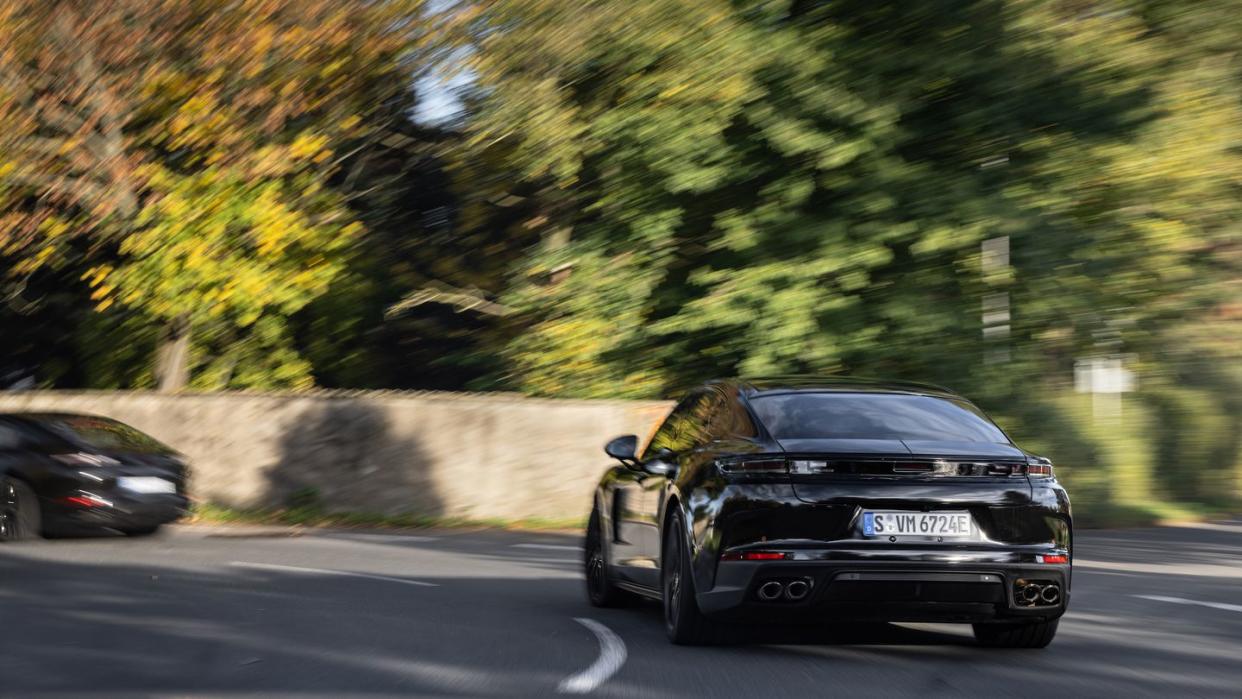
We had a chance to sample a new Panamera Turbo E-Hybrid prototype with the “semi-active” PDCC system and one with Active Ride near Porsche’s factory in Leipzig, Germany. It’s always a little hard to evaluate ride quality in Germany, as the roads are so good, but there’s a very obvious difference between the two cars. The active suspension seems to make all small road imperfections disappear entirely. The PDCC car didn’t ride badly, but you notice so much more of what’s beneath you.
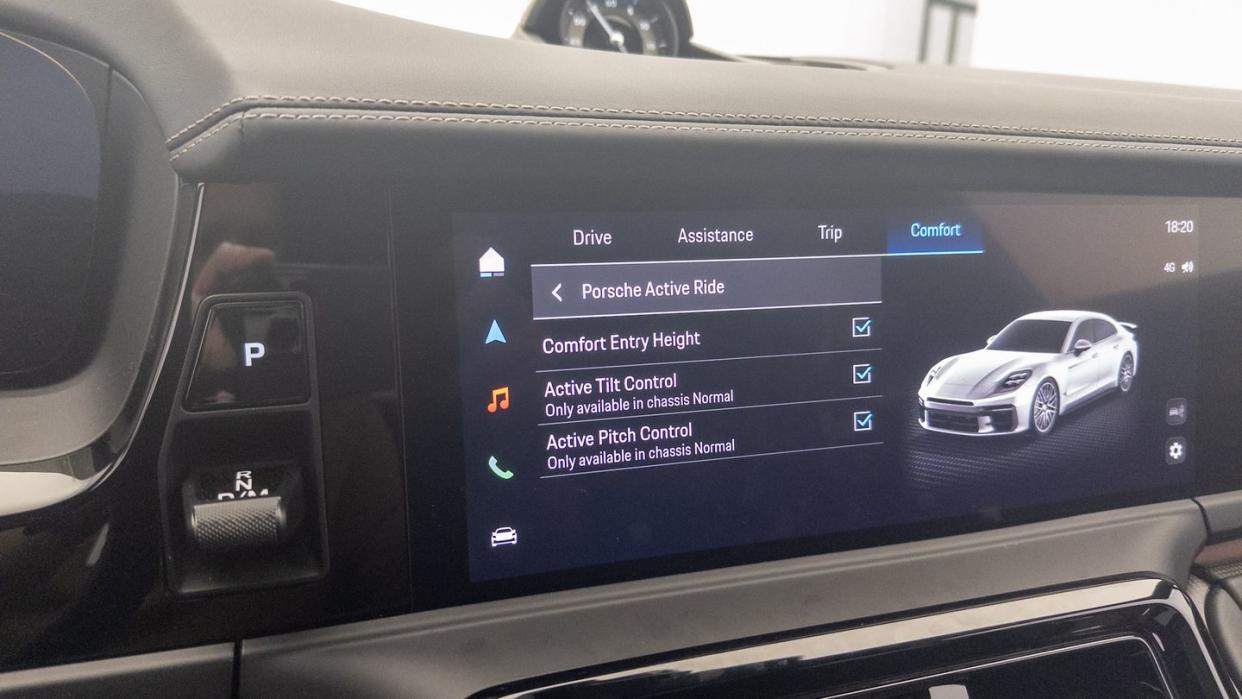
In Normal mode, Active Ride offers driver-selectable active pitch control and active roll control. It feels wild. With pitch control enabled, there is no perceptible body motion under acceleration and braking, and it’s disorienting at first. Me and another journalist at the event likened braking to the sensation you get when getting back into a drum-braked car. You hit the pedal, and you expect more to happen, but then nothing happens. Only in the Active-Ride Panamera, your brain tricks you into thinking nothing’s happening because the body stays perfectly level as the car slows down.
With roll-control switched on, the car leans into corners like a motorcycle. Another strange sensation opposite to what we expect to happen in this scenario. I offer that these systems feel quite unnatural. “That's the reason why this additional function is optional,” he says. “You can choose it in the center display because it's a question of taste.” Turn off the active roll control, and the body stays almost totally flat in cornering. Dr Bittner says that a PDCC-equipped Panamera rolls around 3 to 3.5 degrees per G—the Active Ride car rolls about 0.3 degrees. And that’s just the deformation of the tire. The suspension system isn’t tuned to compensate for that, so the driver gets some feedback about what’s happening beneath them. In Sport and Sport Plus modes, the system allows for a bit more body motion to give the driver even more feedback and to maximize performance potential, but the body control is still freakishly good.
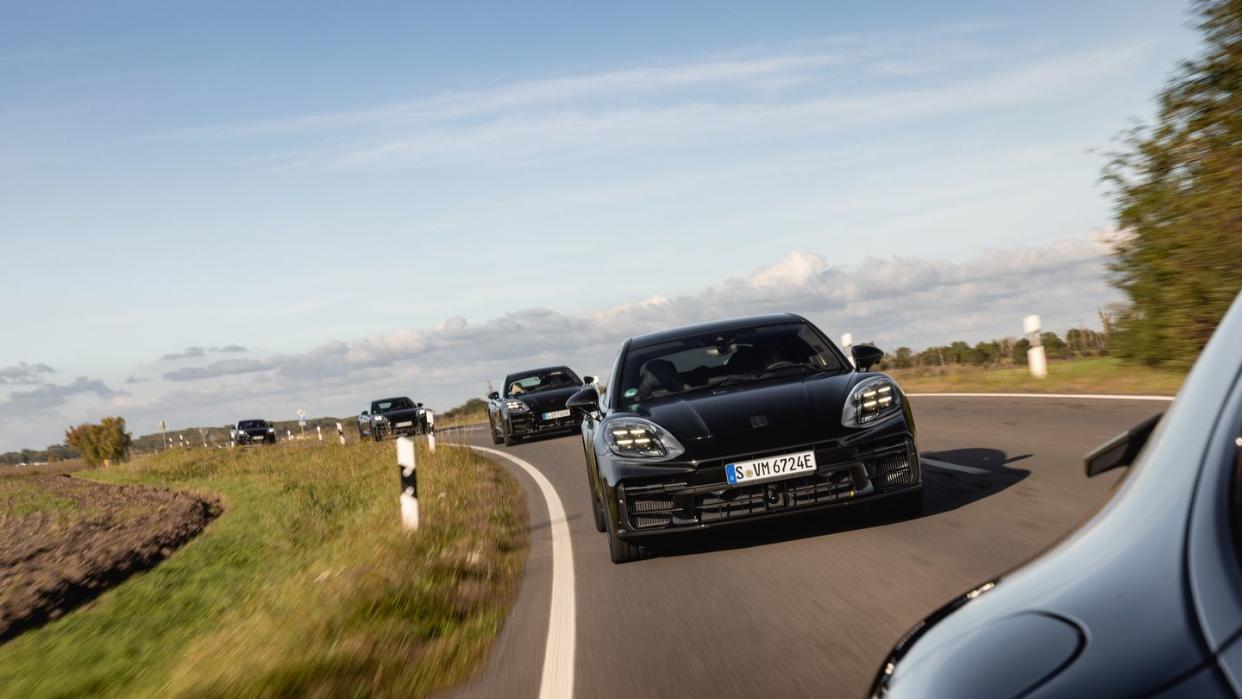
We look forward to spending more time with the system to fully understand it. It’s a lot to wrap one’s head around on wet, cold, unfamiliar roads in a very expensive prototype someone let you drive for 20 minutes.
What’s as exciting about the system’s implementation in the Panamera is what it promises for other cars. What is like in a car designed around Active Ride from day one? How can it be used in a high-downforce car like a GT3 RS? What sort of packaging benefits does it bring when you don’t have any need for anti-roll bars?
It’s a dream for the vehicle-dynamics engineer, and in the new Panamera, it’s just the beginning.
You Might Also Like
